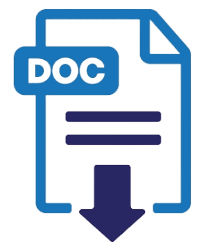ANALISIS DAN PERANCANGAN MATERIAL HANDLING DENGAN PERHITUNGAN NIOSH LIFTING EQUATION SINGLE TASK
Fakultas Teknologi Industri Universitas Gunadarma
Indonesia
Article Submitted: 04 September 2019
Article Published: 04 September 2019
Abstract
Revised NIOSH Lifting Equation (RNLE) merupakan sebuah aplikasi yang dibuat oleh National Institute for Occupational Safety and Health (NIOSH) yang merupakan sebuah institusi di Amerika yang mengembangkan perangkat penilaian dalam bidang keselamatan dan kesehatan kerja. Salah satu aplikasi yang dikembangkan dinamakan Revised NIOSH Lifting Equation Single Task yang digunakan untuk menguji aktifitas pemindahan barang tanpa perpindahan posisi kaki. Aplikasi yang dibangun akan memberikan penilaian terhadap sistem kerja yang dilakukan oleh seorang pekerja. Salah satu hasil perhitungan dari aplikasi tersebut adalah nilai Lifting Index (LI) yang menyatakan tingkat resiko pekerjaan. Aplikasi RNLE dikembangkan dengan dasar program Microsoft Office Excel. Rumus perhitungan untuk mendapatkan nilai LI dan parameter yang diperlukan disediakan oleh NIOSH dan dapat dipelajari. Penelitian ini mengembangkan rekomendasi perbaikan sistem kerja pada aplikasi RNLE dengan menggunakan program Microsoft Office Excel. Rekomendasi perbaikan yang diutamakan adalah posisi awal benda dan posisi akhir yang sebaiknya diatur sedemikian sehingga mengoptimalkan kemampuan pekerja. Cara optimalisasi yang bisa dilakukan dengan merubah salah satu nilai parameter masukkan tanpa merubah nilai yang lainnya.
Keywords
References
A. Garg dan J. S. Moore, “Epidemiology of low-back pain in industry.” Occup. Med, vol. 7, no. 4, hal. 593 – 608, 1992.
W. E. Hoogendoorn et al, “Flexion and rotation of the trunk and lifting at work are risk factors for low back pain: results of a prospective cohort study,” Spine, vol. 25, no. 23, hal. 3087 – 3092, 2000.
L. Manchikanti, “Epidemiology of Low Back Pain,” Pain Physician vol. 3, no. 2, hal. 167 – 192, 2004.
A. Van Nieuwenhuyse et al, “Risk factor for first-ever low back pain among workers in their first employment,” Occup. Med, vol. 54, no. 8, hal. 513 – 519, 2004.
N. Arjmand et al, “Revised NIOSH Lifting Equation May generate spine loads exceeding recommended limits,” International Journal of Industrial Ergonomics, vol. 47, hal. 1 – 8, 2015.
W. S. Marras, “Occupational low back disorder causation and control,” Ergonomics, vol. 43, no. 7, hal. 880 – 902, 2000.
A. M. Iguti dan E. L. Hoehne, “Lombalgias e trabalho,” Rev Bras Saude Occup. vol. 28, hal. 78 – 87, 2003.
M. C. Silva, A. G. Fassa dan N. G. J. Valle, “Dor lombar cronica em uma populacao adulta no sul do Brasil: pevalencia e fatores associados,” Cad Saude Publica, vol. 20, hal. 377 – 385, 2004.
S. Moraes, “A prevalencia de lombalgia em capoeiristas di Rio de Janeiro,” Rev. Fisioter Bras, vol. 4, hal. 311 – 319, 2003.
M. Halfenstein Jr, M. A. Goldenfum dan C. Seina, “Occupational low back pain,” Rev Assoc Med Bras, vol. 56, no. 5, hal. 583 – 589, 2010.
A. Singh et al, “A review on NIOSH Lifting Equation Applicability,” IEEE Region 10 Humanitarian Technology Conference (R10-HTC), 2016.
T. R. Waters et al, “Efficacy of the Revised NIOSH Lifting Equation to Predict Risk of Low Back Pain Due to Manual Lifting: Expanded cross-sectional analysis,” Journal of Occupational and Environmental Medicine, vol. 53, no. 9, hal. 1061-1067, 2011.
Bureau of Labor Statistics, US Department of Labor, Nonfatal Occupational Injuries and Illnesses, Private Industry, 6, 10 – 12, 2008.
National Institute for Occoupational Safety and Health, Safety and Health, The National Occupational Exposure Survey, Cincinnati, DHHS (NIOSH), 89-103, 1989.
V. Kamala, P. Malliga dan G. M. Priyanka, “Criteria Based Ergonimic Assessment in a Manufacturing Industry,” In Proc. Proceeding of IEEE IEEM, 2016.
M. L. L. R. Okimoto dan E. R. Teixeira, “Proposed procedures for measuring the lifting task variables required by the Revised NIOSH Lifting Equation – A case study,” International Journal of Industrial Ergonomics, vol. 39, no. 1, hal. 15-22, 2009.
T. R. Waters, V. Putz-Anderson dan A. Garg, “Applications Manual for the Revised NIOSH Lifting Equation,” NIOSH (National Institute for Occupational Safety and Health), USA, Technical Report, 94-110, 1994.
T. R. Waters, V. Putz-Anderson, A. Garg dan L. J. Fine, “ Revised NIOSH equation for the design and evaluation of manual lifting tasks,” Ergonomics, vol. 36, no. 7, hal. 749-776, 1993.
NIOSH (National Institute for occupational Safety and Health). “A Work Practices Guide for Manual Lifting,” . U.S. Department of Health and Human Services (NIOSH), Cincinnati, OH, Technical Report, 81-122, 1981.
Ergonomicsplus, “A Step-by-Step Guide to Using the NIOSH Lifting Equation for Single Tasks,” 2015. [Online]. Available at http://www.ErgonomicPlus.com. [Diakses pada: 11 November 2015].

